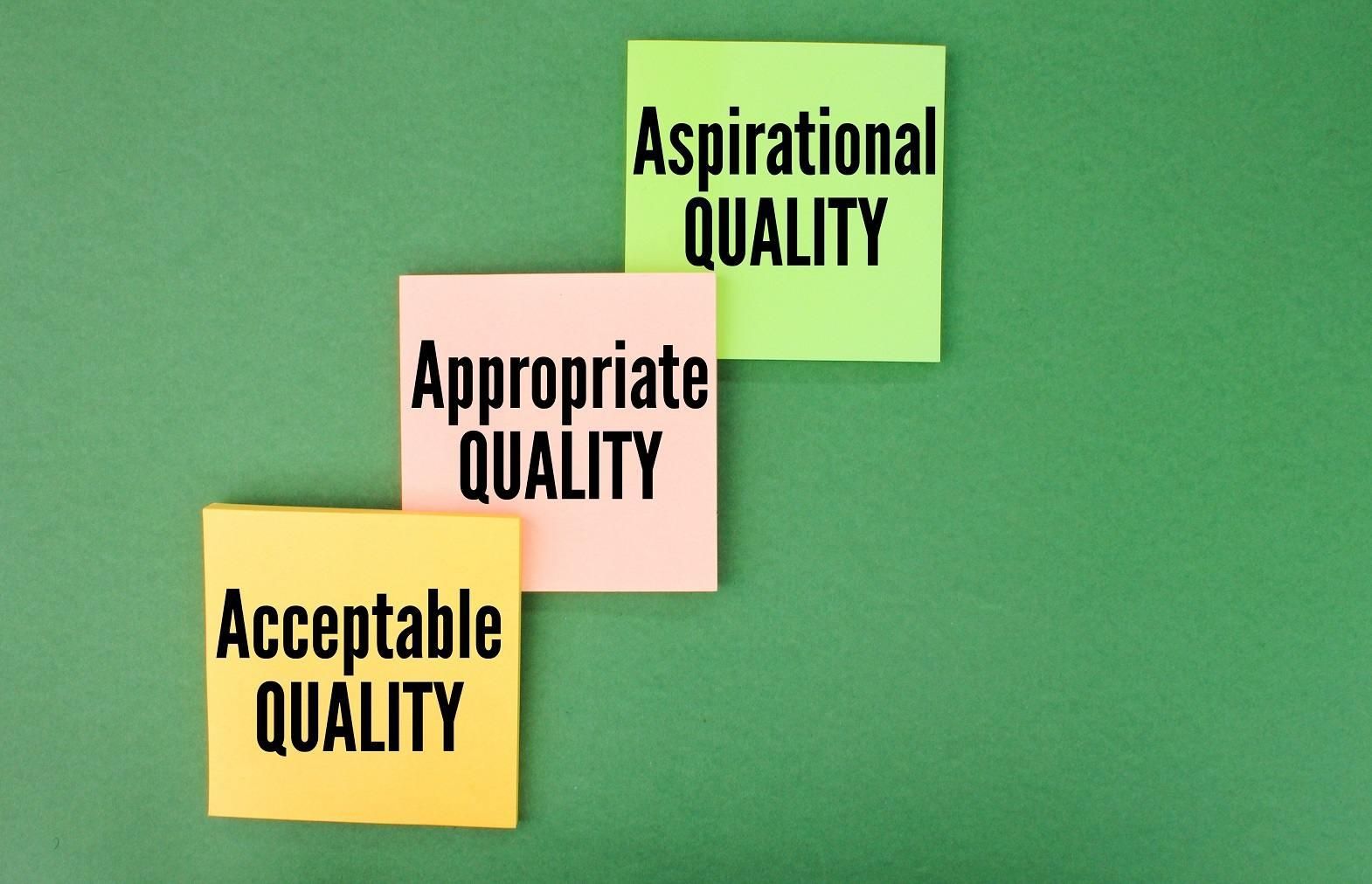AcceptedQuality Level (AQL):
AQL is one of the most frequently used terms when it comes to quality in the apparel export industry. As most of the acceptance decisions of the apparel shipments for the export market are made on the basis of AQL-based sampling plans. AQL means Acceptable Quality Level. In any business process, before accepting the finished goods from the manufacturer, the buyer conducts an inspection of the goods. This is especially important in the export garment sector because foreign buyers are highly concerned about product quality. They specify an AQL level for the product to the manufacturer. Buyers perform inspections of goods through a random sampling process. If the AQL criteria are met, it means the goods are at an acceptable quality level, and the buyer provides a certificate to allow the shipment of the goods. The AQL level varies from process to process, product to product, and even buyer to buyer. Below is a sampling plan for final shipment inspection. Acceptance Quality Level (AQL) refers to the maximum number of defective items that could be considered accepted during random sampling and inspection. The defects found during inspection are classified into three categories:- Critical: Must be 100% accurate. There is no acceptable range.
- Major: Normally up to 2.5% defects are allowed.
-
Minor: Normally up to 4% defects are allowed.
Single Sampling Method
Double Sampling Method
Multiple Sampling Method
How to Read AQL Table?
It is very easy process. Now terms of AQL table are given below:
Lot or Batch size: This means total how many pieces inspector is going to check or inspect.
Sample size Code letter: This code is indicative a range of batch size.
Sample size: It means that how many pieces will be picked up for inspection from the total offered pieces (Batch).
Ac (Accepted): The number in this column denotes that if the inspector finds up to that many defective pieces the shipment will be accepted by buyer.
Re (Rejected): On the other hand number in this column denotes that if the inspector finds that much defective pieces or more than the listed number, the shipment will be rejected (or asked to the manufacturer for 100% inspection and re-offer for final inspection) by buyer.
AQL Requirements Based on the Products:
In general cases the buyer will determine which sampling plan and what AQL to adopt. There are three types of sampling plans: i.e. single, double and multiple sampling plans. Each sampling plan can be performed at three levels, i.e. normal, tightened and reduced, depending on inspection requirements and quality of the products. The apparel industry mainly uses single sampling plans for the acceptance decisions. However, a few buyers also use double sampling procedure. In single sample based on AQL table you randomly draw a sample consisting of specified number of garments from a lot. The sample plan also provides the number maximum allowed defective pieces. If the defective pieces are less than allowed number the lot is accepted and if the number of defective pieces is greater than allowed the lot is rejected. One may say that as the acceptance sampling is scientific, ideally speaking, it must lead to 100% reliable results. In other words, it must always lead to acceptance of lots containing lower defective level than AQL and must reject all the lots that contain more defective products than AQL. But this is not possible, as the acceptance decision is made only on the basis of small sample drawn from the lot and it carries a risk of making a wrong judgment.
Single sampling plan - Normal inspection:
Assurance an AQL of 2.5 % and a lot size of 1200 garments and the sample size is 80 garments. If the number of defective garments found is 5 the total lot is "Acceptable" suppose if the defective garments found is 6, the total lot is "Reject/ Re-Check".
Double sampling plan - Normal Inspection:
Assurance an AQL 4.0% and a lot size is 1200 garments and the sample size is 80 garments. If the Number of defective garments found is 7, the total lot is "Acceptable" suppose if the defective garments found is 8 the total lot is "Reject/ Re-Check".
For Example:
- Total garments (lot Size) 1200 garments
- Sample size (selected for inspection) 80 garments
- AQL 2.5 / 4.0
- If the major defective found is 5 and minor defective found is 7 the total garments is "Acceptable".
- If the defective exceed (Above 5 major and 7 Minor), the total garments is Reject / Re-check.
What AQL is not?
Having known what is AQL? How does it work? How to succeed in AQL based inspections? It is equally important to now, as indicated below, what AQL is not:
- A permit to ship defective goods to the tune of agreed AQL level: AQL 4.0 does not mean that supplier has a right to send up to 4% defective merchandise to customer /buyer.
- A guarantee that all shipments passed as per AQL plan will definitely contain lower percent defective than the specified AQL. There is also no guarantee that lots with higher percentage defective will not pass on AQL inspection.
- An indicator of the quality level achieved by a manufacturer. Let us assume that the average rate of defective garments in a manufacturer's shipment is 6%, but the AQL used by buyer for final inspection is 2.5. It is possible that the manufacturer may resort to 100% inspection of the merchandise to weed out the defective garments so that the shipment can pass the final inspection by the buyer at AQL 2.5.
This article was originally published in Textile learner blog run by Mazharul Islam Kiron.







Comments